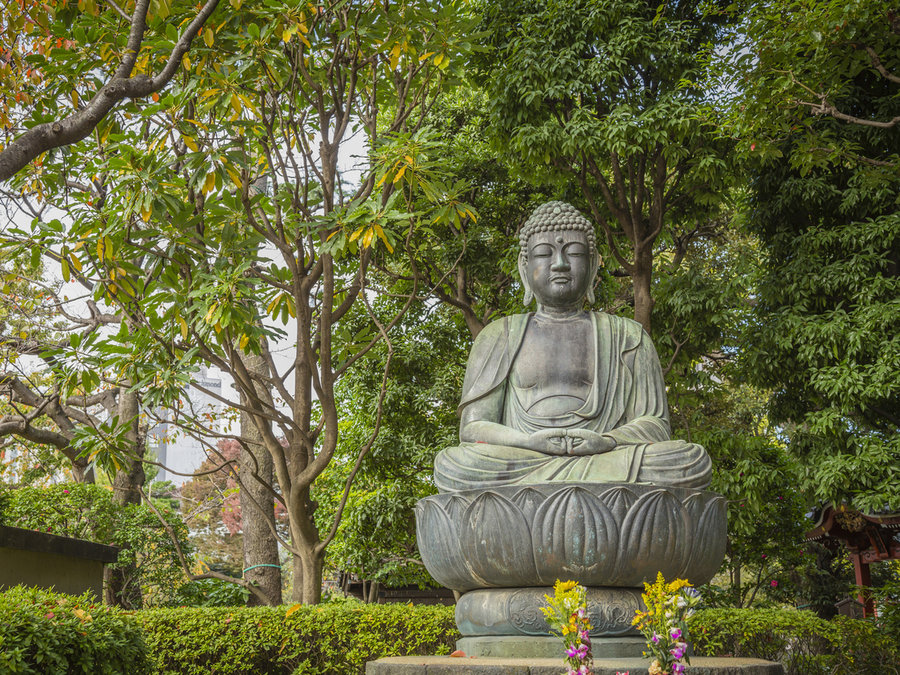Teddy Dondanville
Rock Climbing Guide & Freelance Writer
Los Lunes Son Para Libros: 4th Edition

Why Buddhism is True: The Science and Philosophy of Meditation and Enlightenment
-Robert Wright
I picked up this book (or I guess I should say ‘downloaded’) because it was recommended to me by fellow Peace Corps Trainee sometimes during site exploration. Robin and I were at the hostel conversing while we prepared homemade lentil soup. Our conversation quickly approached spiritual realms and I went to bed that night with new items on my reading list. Robin is quite some years older than me (and much wiser) and so it’s safe to say I took her recommendations rather seriously. Lucky for me her first recommendation worked out great! SPOILER ALERT: I am not enlightened after reading this book.
Why Buddhism is True, written by Robert Wright, is an interdisciplinary crash course of evolutionary psychology and Buddhism. Essentially what Wright tries to do in this book is expose the reasons, or truths, of Buddhism based on his personal meditation practice as well as psychological science. This combination, of secular science and religion, was extremely paradoxical and fascinating from the get go.

Wright starts his book talking about how natural selection has created humans to be inherently delusional. What he means by this is that natural selection, and its only job of spreading our genes into the next generation, prepares humans to behave in ways and react to behaviors that don’t necessarily make the most sense or make a person feel the best that they can feel. Natural selection has designed us to avoid things that might hurt or dissuade us and move closer to things that make us feel “better”. Because of this Wright argues that humans rarely see the world clearly, which leads them to suffer themselves, and to cause suffering to others. It’s with this illusionary process—of clinging attraction to things and aversion to other things—that Wright creates a bridge to Buddhism.
Without being able to ever completely do this book justice (or completely understand it for that matter), I’ll pick out some “truths” of Buddhism that Wright outlines and their connections to evolutionary psychology. Then maybe I’ll talk more depending on if I feel smart.
(1.) “Humans tend to anticipate more in the way of enduring satisfaction from the attainment of goals than will in fact transpire”. This illusion of perpetual aspiration is described in many Buddhist texts. Wright also argues that it is a product of natural selection because if we weren’t anticipating and we weren’t searching for satisfaction, we would never reproduce and create the next generation.
This concept also does well to explain why humans have so much conflict. Since we’re all inherently delusional and on selfish missions to make ourselves feel good and say “fuck it” to all the rest, it makes sense why we get in arguments and fist fights. Multiply that by millions of people, and well, you’ve got our current global situation (and every conflict in the past and those coming our way in the future).
(2.) The concept of ‘suffering’ that Wright talks about in his book comes from the word dukkha. Which could also be translated as “unsatisfactoriness”. We as humans are programmed by natural selection to search our environments for things that make things better. In other words, we are constantly “scanning the horizon for things to be unhappy about, uncomfortable with, unsatisfied with.”
The source of our dukkha is tanha which is translated as “thirst”, “craving” or “desire”. From a natural selection point of view, along with evolutionary psychology, tanha is what is instilled in animals so that they are never satisfied for too long. The lion, after all, only enjoys the hunt. The Buddhist concept of tanha then, is not only our desire to cling to pleasant things but also to escape from unpleasant things (such as the lion nipping at our heels).
(3.) Wright then goes on to explain how our constant struggle with dukkha and tanha need not enslave us. In fact, Wright argues, using both psychology and anecdotes from his personal life, that meditation can help lessen their grip upon our lives. And in the ultimate form, even help us reach nirvana. So how does a meditation practice help us do this? Well in general what it does is make us more aware of our feelings. During medication, the task is often to observe. To observe how we feel, where we feel it in our bodies and perhaps why we feel it in the first place. This introspective process however is not our normal game plan. Genetically we do very little observing and a lot of acting, sometimes following feelings down dangerous rabbit holes that ruin our days or even ruin our relationships with other people. Buddhism ascertains, along with Wright, that mediation can help us be more selective with which feelings we experience to fully engage with. Meditation does this precisely through allowing us to observe them first, and later, choosing to identity with some and not with others. In his book Wright shares many anecdotes where the accentuation of certain feelings—including wonder, compassion and a sense of beauty—present themselves in his life more often when a mediation practice is present. And if you don’t want to take his word for it, then take mine because I too have experienced this. And if you don’t want to take my opinion, well then, here’s some science…
Humans have what psychologists call “the default mode network.” This is essentially, according to brain scan studies, when our minds are active even when we are not doing anything specific—such as talking to people, reading or writing. “It’s the network along which our mind wanders when it’s wandering.” When this is happening our minds go many places; to past memories or some looming crisis in the near future. Where our minds don’t go is the present moment; the sounds of birds on our walk, the smell of pine trees and rain before a storm, or the spider camouflaging on a nearby flower. Meditation has been found to quiet and even slow down the speed and intensity of the default mode network. This obviously happens in the act of meditation but here’s the kicker, even after meditation or during the normal day of a person who frequently practices mediation, the default mode network is less noisy, less stirring. This then allows the brain to be more mindful, to be more observant of the beauty in the present moment and to be more in control of the feelings that serve well and let pass by the wayside the negative feelings that consume us.
(4.) “Our intuitive conception of the ‘self’ is misleading at best. We tend to uncritically embrace all kinds of thoughts and feelings as ‘ours’, as part of us, when in fact identification is optional. Recognising that identification is optional and learning, through meditation, how to make the identification less reflexive can reduce suffering.”
In other words, we have more autonomy over identifying with certain thoughts, emotions and facets of our ‘self’ than we originally thought; and mediation helps strengthen that autonomy. And yes…this is entirely paradoxical. How do we exercise autonomy and identification of ‘self’ if ‘self’ doesn’t actually exist? Well according to Buddhism, the concept of ‘not-self’ helps us reach this realm. To exercise discretion is to follow one of Buddha’s famous sermons on ‘not-self’. It’s at this point in Buddhist philosophy gets really heady. In fact, according to Buddha, the stuff our body is made up, its form, is not actually under our control. Buddha writes, “Form is not self”. We are not our bodies.
All headiness aside, Wright approaches this idea from a more digestible viewpoint. Taking all of Buddha’s ideas of ‘self’ and ‘not-self’ into consideration, Wright encourages his audience to “be open to the radical possibility that your self, at the deepest level, is not at all what you’ve always thought of it as being.” This much I can grasp. Step #1: To detach from ourselves and become not-ourselves (through meditation). Step #2: To observe ourselves from an external viewpoint (during mediation). Step #3: To pick, choose and identify with feelings, emotions and facets of ourselves that make us feel whole. Step #4: To let the negativity and ugly parts pass by. Step #5: To feel empowered in your new autonomous control of self by becoming not-self (after meditation). Easy right? I don’t think so. But be careful with all this and don’t think too hard. According to Ajahn Chah, a twentieth-century Thai monk, “to understand not-self, you have to meditate” and if you simply try to understand via “intellectualizing” alone, “your head will explode.”

(5.) To expand further upon the Buddhist concepts of ‘self’ and ‘not-self’, and ground them in modern day science, Wright throws in some really interesting psychological research. Wright explains that our brain does not function as one entity. The idea that there is a “doer of deeds” or “thinker of thoughts” is actually another illusion. Instead, it’s more accurate to think of the human brain as ‘modular.’ In other words, there are different modules of the brain (more complicated than just the two hemispheres) that do the thinking and make the decisions for us. “Thoughts think themselves”.
Natural selection has shaped the brain to operate in this way. There are modules focused on short term decisions and goals while others are more long-term focused. A rough taxonomy of the modules has been developed by evolutionary psychologists. Examples of modules are: self-protection, mate attraction, mate retention, affiliation, kin care, social status and disease avoidance. These modules essentially compete with one another for our conscious recognition. In other words, when faced with a certain decision, the different modules of our brain compete for power, each trying to push their own agenda. It’s the interaction of these modules that shape our behaviors and how we react to certain situations.
(6.) In Buddhism there is doctrine about ‘essence’ and ‘emptiness’. On the road to enlightenment there is the goal of experiencing emptiness. In other words, essence of things is an illusion and must be mitigated– often times through mindfulness and mediation. Ideally what happens is that you stop attaching essence to things, therefore they are empty and therefore you see more clearly. A clearer vision of the world helps us avoid creating our own suffering and inflicting suffering on to other people. In this sense, Wright explains, “seeing the world more clearly can make you not just happier but more moral”.
The human capacity to attach social, cultural and perceptual essence to things makes sense from a natural selection point of view. It is by creating essence for objects and people that we decide what we are going to eat, who we are going to interact with, what situations we become involved with etc. On the flip side, it is also how we decide what things, people and situations to avoid. This process of essence attachment, according to an evolutionary psychological perspective, occurs so that we can continue to protect ourselves, thrive throughout our lives and create a new generation.
The Buddhist idea, accomplished through mediation, is to become aware that essence is a perceptual construct; that it has no real meaning outside of the socio-cultural context in which it is created, given and perceived. Becoming aware of the illusion of essence (beyond just an intellectual understanding of it) permits selective engagement with it. Much like becoming aware that thoughts think themselves, we can selectively engage with thoughts/emotions that serve us, and disengage with thoughts/emotions that negatively impact our lives.
This portion of Wright’s book made a lot of sense to me. It is, in other words, the sociological concept of social constructivism. In a way, it packs social constructivism with a deeper and evolutionary background—expanding the concept from just a cultural idea to a concept with history and purposeful, naturally selected importance. However, the idea of stripping essence from the things in my life seems a bit much. In certain contexts, I see why it would make sense. For instance, essentialist ideologies that attached bigoted essence to race, ethnicity, gender, nationalism etc. should completely be eliminated. This no doubt would help alleviate some suffering in the world. But the essence I prescribe to my loved ones, to my favorite places, activities, foods, drinks, etc.…well I’m not so sure I’m ready to stop acknowledging that. But since I’m not enlightened, I guess I don’t have to worry about it.

To wrap up, I’ll just leave you all with his awesome quote found at the end of Wright’s book:
“Mindfulness mediation involves increased attentiveness to the things that cause our behavior—attentiveness to how perceptions influence our internal states and how certain internal states lead to other internal states and to behaviors. This attentiveness includes an awareness of the critical role feelings seem to play in the chain of influence—a role shaped by natural selection, which seems to have calibrated feelings as part of its programming of our brains. Importantly, the meditative practices that bring awareness of these chains of influence also empower us to intervene and change the patterns of influence. To a large extent, that’s what Buddhist liberation is: a fairly literal escape from chains of influence that has previously bound us and, often, to which we had previously been blind.”



This is really powerful stuff – I’ll absolutely have to pick this book up.
Some thoughts for you; according to evolution, or natural selection, we have been prepared for survival as a species, and the most desirable traits have been passed on to us as we will pass them onto our children. Does going against those natural thoughts, desires, experiences that we have go against natural selection? Are we setting up our species to stop fighting for survival? Playing devil’s advocate here.
On the other hand, maybe discovering meditation and mindfulness is PART of our evolution – thinking long term, big picture here – and will lead to things necessary to our survival like peace, mindful environmental practices, etc.
Thoughts?
How did you start your meditation practice? I’ve heard a lot of recommendations for participating in some guided mediation to start. I’ve done a lot of reading and adsorbing lately, it’s time to put it into practice.
Drake,
Thanks for reading and thanks for your comment.
I think I understand your first thought. If I do, I think what you’re getting at is that the ability to go against our naturally selected thoughts/desires /emotions, and perhaps choose ones with more control and mindfulness (because of meditation), is potentially dangerous. Like if we think or act a certain way according to a process millions of years old, why change it? Like it might alter our inherent ability to survive? As grandpa always said, “If it ain’t broken, why fix it?” If this is indeed what you are referring to, then I would say well done. Wright doesn’t address this specifically in his book. And if he does, maybe I missed it. I would argue however, and I am sure Wright would also, that it is broken. Well maybe not broken, after all, natural selection has gotten us this far. But maybe that there’s an alternative route. A softer, slower, more sensitive, more mindful, more loving route that would still help us survive and perpetuate generations, but perhaps not in such conflictual and violent ways.
I really like your thought about meditation and mindfulness as part of human evolution. It seems to me to be a good skill that helps us live healthier and happier lives. Therefore, a trait that we could expect/want to pass on through the generations. In other words, yes, I do believe it is. With that said though, it is by no means a new part that our generation or recent generations are utilizing. It’s ancient. But it does seem that is more in the forefront of our minds (pun intended) as of lately. A sort of Western resurgence/ commodification of mindfulness and mediation seems to be taking place. I participate in it. Many people do. It’s the best we can do and good for us.
I started my mediation practice with yin yoga. Yin is slow, very slow. Holding a pose anywhere from 2 to 5 minutes. You lose blankets, and blocs, and pillows to be as comfy as possible. It is meditation through stillness as opposed to movement. A lot of yin yoga contains yoga nidra. Which is exactly what you are referring to. It is guided meditation. Sometimes it gets tossed in at the beginning or the end. But there are also whole classes dedicated yoga nidra. I would seek these two practices out as a beginning to your mediation practice. There are plenty of studios in CO that offer this style of practice. And if you don’t want to pay, or leave your house, I am sure you can find audio discs or downloads that can help guide you through the process.
Pingback: Los Lunes Son Para Libros: 6th Edition | The Ramblings of T.W. Dondanville